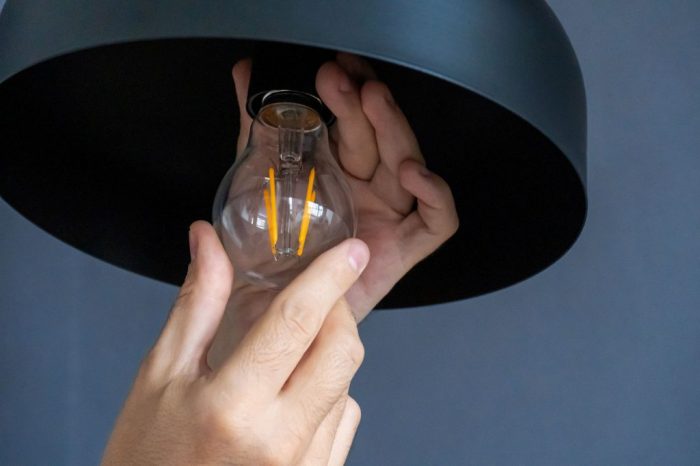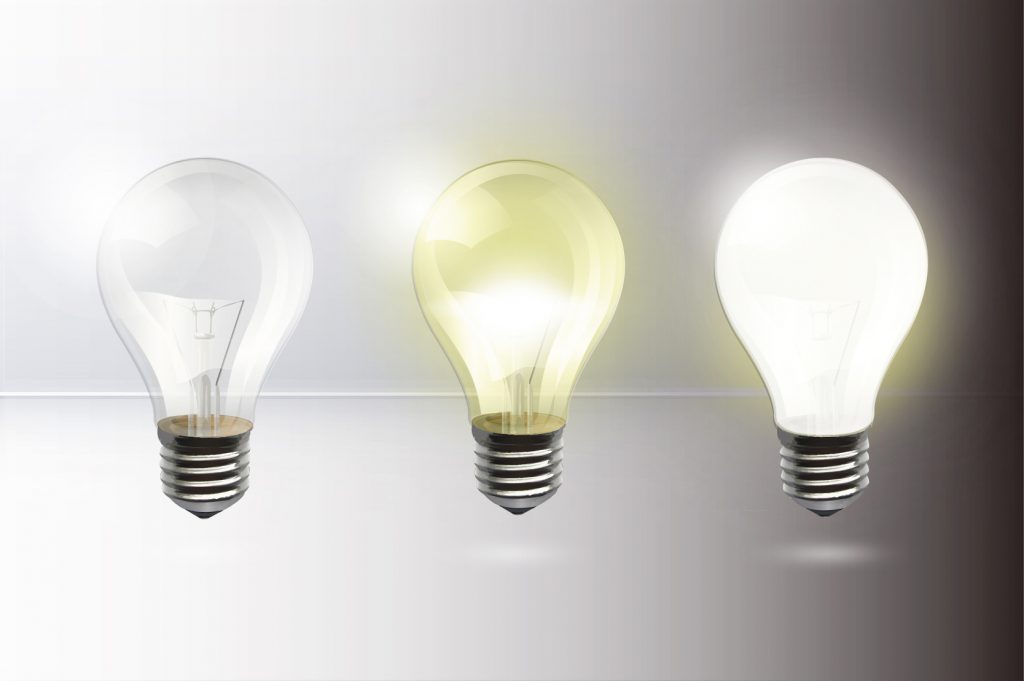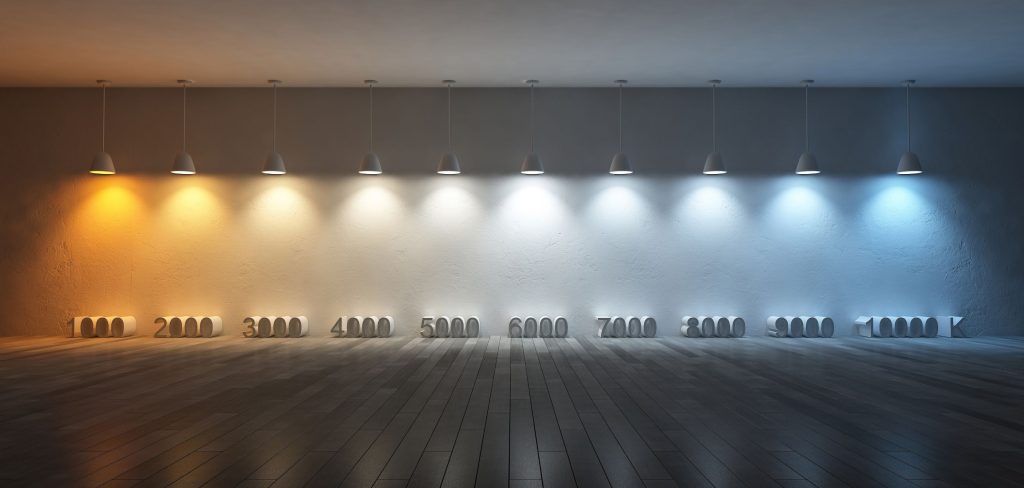
3 Light Bulb Mistakes Everyone Makes And How To Avoid Them
Using the wrong light bulb can really make your space feel all wrong. If your room feels dark and dingy or, the opposite, harsh and cold, your light bulb may be the culprit.
Before you buy another bulb, make sure you’re not making one of these common mistakes in your home!
Light Bulb Mistake #1
Using the Wrong Wattage
Watts refer to the amount of energy a light bulb uses. The lower the wattage, the less electricity a bulb needs to stay lit. Energy-efficient light bulbs can give off the same amount of light using fewer watts, which saves you money on your power bill!

Every light fixture has its own wattage requirements, so you’ll need to do a little sleuthing to find out what your fixture requires.
There should be a sticker or label with the wattage limit clearly printed on it, although you might need to unscrew one of your existing light bulbs and look near the threads to find it. If you can’t find the wattage limit on your fixture, give us a call and we can help you out!
Most light fixtures have an individual bulb wattage limit (typically 45W or 60W), but there are some that have an overall limit for the entire fixture instead. For these you’ll need to add the watts together for each bulb to make sure you’re under the safety limit.
It’s okay to use bulbs with lower watts than what your fixture calls for to save on your energy bill, but never go higher. Exceeding the wattage limit on a fixture could start a fire!
Light Bulb Mistake #2
Ignoring the Lumen Rating
A light bulb’s lumen rating will tell you how bright it is. The higher the lumen rating, the brighter it will appear. When it comes to lighting your home, different rooms need different levels of light. Work spaces need lots of light, so choosing bulbs with a high lumen rating is a great way to brighten your kitchen if it’s feeling dim. Other spaces like bedrooms and hallways don’t need to be as bright, so it’s okay to opt for bulbs with a lower lumen rating.

There isn’t an exact formula that will tell you how lumens you need in a room, because it depends on your use and design of the space. You’ll need more lumens in work spaces like kitchens and offices, and less in bedrooms. If your design aesthetic is bright and airy or dark and moody, you’ll need to take that into account when planning your lighting.
A good rule of thumb to get you started is 20 lumens per square foot for floors, 30 lumens per square foot for tables, and 50 lumens per square foot for desks, countertops, and task lighting.
How does this work when you have more than one light bulb in the room? Do lumens cancel each other out or add up? The short answer is: lumens are cumulative. In a room full of furniture, light bounces around enough that the lumens don’t directly add up, and the more bulbs you use the less precise it gets.
When you’re figuring out what you need in your home, it is 100% okay to add the lumens for each bulb in your room together to get a rough idea of what your space will need. You’ll probably end up adjusting it here and there as seasons change, when you repaint your walls, or if your use of the room changes. If your room has a lot of uses- consider getting bulbs that are dimmable so that you can change the light levels depending on what you’re doing!
Light Bulb Mistake #3
Buying the Wrong Color
If you didn’t know that light bulbs came in different color hues, now’s the time to learn! Light bulbs come in a wide range of light “temperatures”, measured in Kelvins (K). The temperature of the light you use in your room will dramatically change the way the room feels.

Warm (2,000K – 3500K)
Wam light bulbs give a room a soft, cozy, and intimate feel with an orange or yellow hue. Outside, you see this type of light during sunrises and sunsets. Inside, it’s often associated with vintage light bulbs, like Edison bulbs, or incandescent light bulbs. It’s great for places like the living room, bedroom, and dining room.
Cool/Natural (3500K – 5000K)
Cool or “Natural” light bulbs give off a truer white color that gives a room a clean, crisp, and inviting feel. This light is more like the light you’d see in the mornings and afternoons outdoors. It’s great for bathrooms, closets, and offices.
Daylight light bulbs (5000K – 6200K)
Daylight light bulbs give off a light that’s close to what you’d see at noon outside on a sunny day. Daylight light makes a room feel even more clean and crisp than natural light, but it can come off a little harsh if you’re not careful. It’s a great choice for lighting work spaces like kitchens and garages, and for task lighting, like a reading lamp.
Blue (6200K+)
After 6200K light starts to look blue, so that bulbs in this color aren’t typically used in homes. There are some exceptions: some artists prefer to work under this light, and people with Seasonal Affective Disorder (SAD) may find blue light beneficial in the winter months.
Bonus Mistake #4:
Just Living With It
If the lighting just doesn’t feel right in your room, you don’t have to live with it! Too dark and depressing? Add lumens! If your clean room still feels dingy, it could be that you need cooler bulbs… or if your room feels stark and cold, you can warm up your bulbs to make it feel more inviting. And always double-check your wattage before you buy! With the right wattage, lumens, and temperature, you’ll be surprised at how much better your lighting can work for you.
We know what a big deal it is to make your house feel exactly the way you want it to. Don’t let your lighting hold you back! If you have any questions about how to find the right light bulbs for your space, give our experts a call and we’ll help you find exactly what you need!
